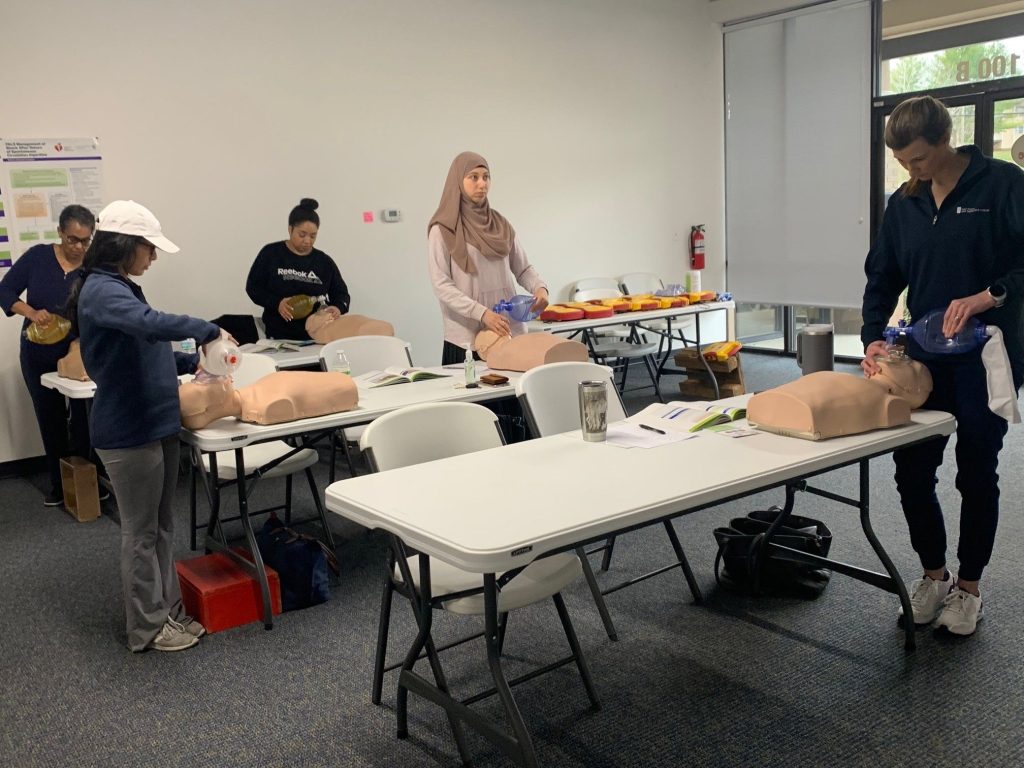Your Basic Life Support (BLS) certification represents more than just a credential. It proves you possess lifesaving skills that employers actively seek. Yet many healthcare professionals struggle with presenting this certification effectively on their resumes. Poor placement or inadequate formatting can cause hiring managers to overlook this critical qualification.
This guide reveals proven methods to highlight your BLS certification on your resume documents. You’ll discover strategic placement options, proper formatting techniques, and common mistakes that damage your credibility. Whether you’re a registered nurse, medical assistant, or emergency medical technician, these strategies will help your resume stand out in competitive healthcare markets.
Understanding the Value of BLS Certification on Resume Documents
Emergency medical services treat approximately 356,000 out-of-hospital cardiac arrests annually across the United States. These critical situations demand immediate, skilled intervention. Employers recognize that BLS-certified professionals can respond effectively when seconds determine survival outcomes.
Studies show survival rates of 50-75% can be achieved when BLS interventions are performed within three to five minutes of cardiac arrest. This dramatic improvement in patient outcomes explains why healthcare facilities prioritize candidates with current BLS credentials.
The healthcare sector continues experiencing unprecedented growth. Healthcare support occupations and healthcare practitioners are projected to grow 12.4% and 7.2% respectively, from 2024 to 2034, with approximately 1.9 million job openings projected annually. This expansion creates fierce competition for positions, making the proper presentation of your BLS certification on your resume documents essential for securing interviews.
Strategic Placement of BLS Certification on Resume Sections
Dedicated Certifications Section
The most effective approach involves creating a distinct “Certifications” or “Licenses & Certifications” section. This method allows hiring managers to locate your credentials immediately. Place this section prominently on your resume, typically after your professional summary or work experience.
Example format:
Certifications
– Basic Life Support (BLS), American Heart Association, Valid through March 2026
– Advanced Cardiovascular Life Support (ACLS), American Heart Association, Valid through July 2026
This clear, concise format presents three critical details: the certification name, issuing organization, and expiration date. Healthcare recruiters scan resumes. They need to verify current certifications without searching through dense paragraphs.
Skills Section Integration
For positions where emergency response skills are essential, include “Basic Life Support (BLS)” within your core competencies or skills section. This placement works particularly well for roles in emergency departments, intensive care units, or pre-hospital settings.
Example:
Core Competencies
– Patient Assessment & Triage
– Basic Life Support (BLS)
– Electronic Health Records (Epic)
– Medication Administration
This approach demonstrates that BLS represents an active skill you use regularly, not merely a credential you possess.
Professional Summary Inclusion
When BLS certification serves as a fundamental job requirement, mention it in your professional summary. This immediate presentation captures attention before hiring managers review detailed sections.
Example: “Certified Medical Assistant with current BLS certification from the American Heart Association and four years of experience in high-volume emergency care settings. Proven ability to remain calm and perform effectively during critical patient emergencies.”
Education Section Positioning
Early-career professionals with limited work experience should consider placing their BLS certification near their education credentials. This strategy demonstrates your readiness to enter the workforce with essential qualifications.
Essential Elements for Listing BLS Certification on a Resume
Specify the Certifying Organization
Always identify the organization that issued your certification. The American Heart Association and American Red Cross represent the most widely recognized certifying bodies. Including this information validates your credentials’ legitimacy.
Include Expiration Dates
Current certifications prove your knowledge reflects the latest emergency cardiovascular care guidelines. BLS certifications remain valid for two years and require renewal to maintain current status. Listing expiration dates demonstrates attention to professional standards.
Hiring managers frequently eliminate candidates with expired certifications during initial resume screening. If your certification expires soon, consider renewing before submitting applications.
Add Relevant Context
When space permits, include a brief context that demonstrates how you’ve applied your BLS skills. This approach transforms a simple credential into evidence of practical competence.
Example: “BLS Certification, American Heart Association, Valid through June 2026 – Successfully responded to 15+ cardiac emergencies during hospital rotations, performing high-quality CPR and coordinating team-based resuscitation efforts.”
Common Mistakes That Weaken Your BLS Certification on a Resume
Vague or Incomplete Information
Simply stating “BLS Certified” provides insufficient detail. This vague presentation raises questions about when you obtained certification, which organization issued it, and whether it remains current.
Complete information builds credibility. Incomplete information creates doubt.
Including Expired Certifications
Listing expired BLS certification on a resume seriously damages your professional image. It suggests you’re either unaware of expiration dates or unwilling to maintain essential credentials. Both impressions harm your candidacy.
Remove expired certifications or clearly indicate you’re currently pursuing renewal.
Omitting the Certification Number
While not always necessary, including your certification number can facilitate employer verification. Some healthcare facilities require this information during the credentialing process.
Inconsistent Formatting
Format all certifications identically throughout your resume. Inconsistent presentation appears unprofessional and suggests careless attention to detail—a critical concern in healthcare settings.
Optimizing Your BLS Certification on a Resume for Applicant Tracking Systems
Modern healthcare organizations use Applicant Tracking Systems (ATS) to screen resumes before human reviewers see them. These systems scan for specific keywords and phrases. Proper optimization ensures your BLS certification on your resume doesn’t get filtered out.
Use Standard Terminology
Include both the full name and acronym: “Basic Life Support (BLS).” This approach helps your resume pass ATS filters programmed to search for either variation.
Mirror Job Description Language
Review the job posting carefully. If it requests “current BLS certification,” use that exact phrase. If it mentions “American Heart Association BLS,” incorporate that specific wording.
Avoid Graphics and Tables
ATS software struggles to parse information embedded in tables, text boxes, or graphics. Use simple bullet points and standard formatting to ensure proper scanning.
Tailoring BLS Certification on a Resume for Different Healthcare Roles
Hospital-Based Positions
For registered nurses, medical assistants, or respiratory therapists working in hospitals, emphasize your readiness for high-acuity situations. Mention any specialized BLS training for specific populations (pediatric, neonatal).
Outpatient and Clinic Settings
While BLS remains important in outpatient environments, these roles may prioritize other skills. Position your certification appropriately without overshadowing relevant clinical competencies.
Emergency Services
EMTs, paramedics, and emergency department staff should feature BLS prominently. Consider including information about ACLS, PALS, or other advanced certifications that complement your BLS credential.
Non-Clinical Healthcare Roles
Even administrative healthcare positions benefit from BLS certification. It demonstrates your understanding of emergency protocols and your commitment to patient safety culture.
Enhancing Your Resume Beyond BLS Certification
Continuing Education
Demonstrate commitment to professional development by listing relevant continuing education courses. Include trauma response training, stroke recognition courses, or specialized emergency care programs.
Practical Experience
Describe situations where you applied BLS skills effectively. Quantify your impact when possible: “Participated in successful resuscitation of cardiac arrest patients with 80% ROSC rate.”
Team Leadership
BLS training emphasizes effective team dynamics during emergencies. Highlight leadership roles during code blue situations or your ability to coordinate multi-rescuer responses.
When BLS Certification Matters Most
Required Credentials
BLS certification is mandatory for licensed medical professionals, including doctors, nurses, EMTs, dentists, and therapists. For these positions, the absence of current BLS immediately disqualifies your application.
Competitive Differentiator
When employers review equally qualified candidates, a current BLS certification on a resume can determine who receives interview invitations. This credential signals preparedness and professionalism.
Career Advancement
Many healthcare organizations require BLS for promotion to leadership roles. Maintaining current certification demonstrates your readiness for increased responsibility.
Staying Current: BLS Renewal and Resume Updates
Survival rates from out-of-hospital cardiac arrest improved to 10.5% in 2024, with favorable neurological outcomes in approximately 8.2% of cases. These statistics underscore the importance of maintaining proficiency in current BLS techniques.
Update your resume immediately after completing the BLS renewal. This ensures you never submit applications with expired certification information. Set calendar reminders for renewal dates to maintain continuous certification.
Additional Certifications That Complement BLS
ACLS (Advanced Cardiovascular Life Support)
This certification builds upon the BLS foundation with advanced pharmacological and electrical interventions. ACLS paired with BLS significantly strengthens resumes for critical care positions.
PALS (Pediatric Advanced Life Support)
For professionals working with children, PALS demonstrates specialized expertise. List it alongside your BLS certification on your resume documents when applying to pediatric facilities.
First Aid Certification
Basic first aid training complements BLS and shows comprehensive emergency preparedness. Include it when space permits and relevance exists.
Addressing Employment Gaps Through Certification
If you’re returning to healthcare after a career break, recently renewed BLS certification demonstrates your commitment to reentry. Highlight this in your cover letter alongside your resume to address potential concerns about knowledge currency.
International Considerations for BLS Certification on Resume
American Heart Association and American Red Cross certifications receive recognition internationally. However, some countries require local certification equivalents. Research requirements for international positions and obtain necessary certifications before applying.
Leveraging BLS Certification in Your Job Search Strategy
Networking
Mention your current BLS certification during informational interviews and networking events. It reinforces your professional credibility and readiness to contribute immediately.
Cover Letters
Reference your BLS certification in cover letters when discussing your qualifications for emergency response situations. Provide specific examples of how you’ve applied these skills.
LinkedIn Profile
Ensure your LinkedIn profile mirrors your resume’s certification section. Recruiters often review LinkedIn before requesting formal applications. Consistency across platforms strengthens your professional brand.
The Future of BLS Certification in Healthcare Employment
Growing elderly populations, which typically require greater healthcare services compared to younger demographics, will increase demand for long-term care and emergency response services through 2034. This demographic shift ensures continued employer emphasis on BLS certification.
Healthcare organizations increasingly recognize the value of comprehensive emergency preparedness. Expect BLS certification to remain a standard requirement across expanding healthcare roles. Professionals who maintain current credentials and present them effectively on resumes will maintain competitive advantages.
Frequently Asked Questions About BLS Certification on a Resume
How do I list BLS certification on my resume if it recently expired?
Remove expired BLS certification from your resume entirely. Including expired credentials damages your credibility and may immediately disqualify your application. Instead, enroll in a renewal course immediately. Some employers may consider candidates actively pursuing renewal, especially if you can complete certification before your start date. Mention in your cover letter: “Currently enrolled in BLS renewal course, with completion scheduled for [specific date].” Never list expired certifications as current, as employers verify credentials during the hiring process.
Should I include my BLS certification number on my resume?
Including your certification number is optional, but it can be beneficial. For initial resume submissions, the certification name, issuing organization, and expiration date provide sufficient information. However, some healthcare facilities require certification numbers during credentialing processes. Consider including it if space permits. Format it clearly: “BLS Certification #123456789, American Heart Association, Expires March 2026.” This demonstrates transparency and facilitates verification if hiring managers need to confirm your credentials before interviews.
Can BLS certification help me get hired for non-healthcare positions?
Yes, BLS certification on a resume documents benefits many non-healthcare roles. Teachers, coaches, fitness instructors, flight attendants, and childcare providers all work in environments where medical emergencies may occur. Including BLS certification demonstrates preparedness, responsibility, and commitment to safety. For non-healthcare positions, place your BLS certification in an “Additional Qualifications” or “Professional Development” section rather than featuring it prominently. This acknowledges its value without overshadowing job-specific requirements. Employers across industries recognize that BLS-certified employees contribute to safer work environments.
Take Action: Enhance Your Healthcare Career Today
Your BLS certification represents valuable skills that save lives. Presenting this credential effectively on your resume ensures hiring managers recognize your qualifications immediately. Review your current resume now and implement these proven strategies to strengthen your professional presentation.
Ready to obtain or renew your BLS certification? CPR Nashville is an American Heart Association training site offering initial certifications and renewal courses in BLS for Healthcare Providers, ACLS, PALS, and CPR and First Aid. All classes feature stress-free, hands-on training that prepares you for real-world emergencies.
Don’t let an expired or absent certification limit your career opportunities. Enroll in CPR certification in Nashville or register for BLS classes in Nashville today. Visit CPR Nashville to schedule your training and take the next step toward advancing your healthcare career with confidence.
Your ability to respond effectively during emergencies makes you invaluable to employers. Ensure your resume reflects this critical competency. Update your resume, renew your certification, and position yourself as the prepared professional healthcare organizations seek.





